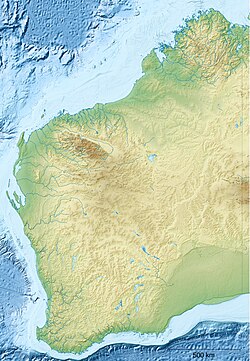New marine park
A 2016 management plan saw this park, along with the Lalang-garram / Camden Sound Marine Park and the North Kimberley Marine Park make up part of what was to be named the Great Kimberley Marine Park, covering about 30,000 square kilometres (12,000 sq mi) of coastal waters from west of Ganbadba (Talbot Bay) to the Northern Territory border. [10]
In 2020, a new management plan was released, titled Lalang-gaddam Marine Park: Amended joint management plan for the Lalang-garram / Camden Sound, Lalang-garram / Horizontal Falls and North Lalang-garram marine parks and indicative joint management plan for the proposed Maiyalam Marine Park. It was published ahead of the gazettal of the proposed Maiyalam Marine Park under the CALM Act as a Class A reserve. Under the new arrangements, the zoning of the Camden Sound park would not change, but the plan is now to amalgamate the four marine parks (Lalang-garram / Horizontal Falls Marine Park, North Lalang-garram Marine Park and the new Maiyalam Marine Park) to form the Lalang-gaddam Marine Park, all in the sea country of the Dambeemangarddee people. This plan will be amended by another 10-year final joint management plan. [7]
The new Maiyalam Marine Park will add 47,000 hectares (120,000 acres) to the Kimberley marine reserves. The larger plan is to create a total of 5,000,000 hectares (12,000,000 acres) of new national and marine reserves in Western Australia. The new spelling, "Lalang-gaddam", reflects the correct pronunciation of the word, and "Maiyalam" means "between islands", or "a gap through". The new Maiyalam Marine Park covers an area off the north-western coast of King Sound and around Macleay Island. The new Lalang-gaddam Marine Park borders the proposed Mayala Marine Park to the west (covering the Buccaneer Archipelago), and the North Kimberley Marine Park (Uunguu waters) to the north-east. The land and sea border to the south abut Bardi Jawi land and a proposed Bardi Jawi Marine Park. Maps show the extent of the various marine parks, native title determinations, zones within the areas, etc. [7]
Details such as port areas are outlined in the plan. An Indigenous land use agreement (ILUA) already covers the Lalang-garram/ Camden Sound, Lalang-garram/ Horizontal Falls and North Lalang-garram marine parks, but an additional ILUA will be needed to allow the creation of the proposed Maiyalam Marine Park in accordance with the Native Title Act 1993 . Much of Collier Bay will remain a general use zone, but the Walcott Inlet will be zoned as sanctuary. [7]


